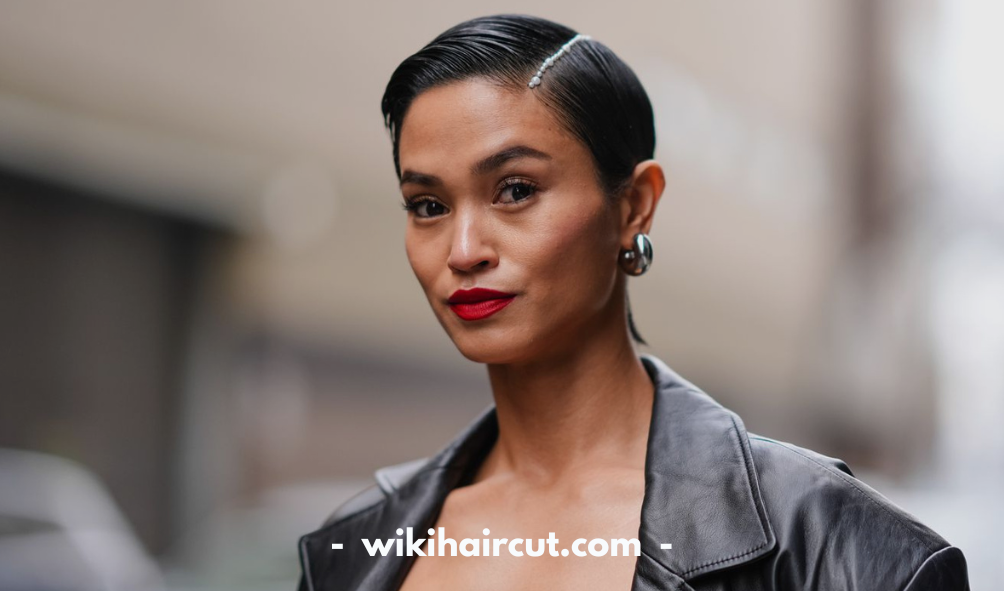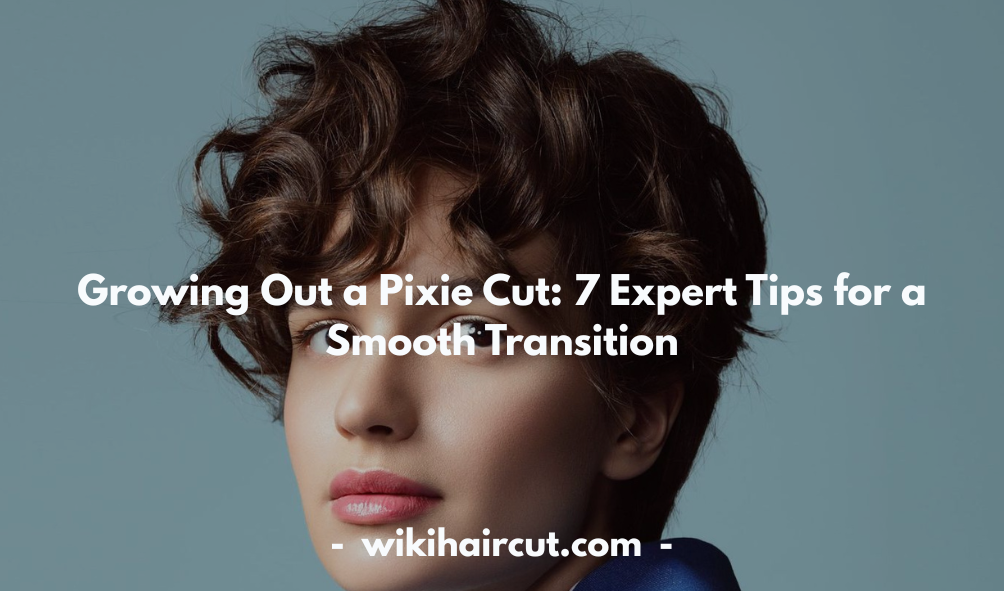Whether you’ve rocked a cropped pixie for years or recently took the plunge into ultra-short hair, there may come a time when you’re ready to grow it out. But as anyone who has gone through the process knows, growing out a pixie cut isn’t just about waiting—it’s about strategy, patience, and smart styling.
In this guide, you’ll discover proven, expert-backed tips to help you navigate the in-between stages with confidence. From regular trims to hair health hacks, we’ve gathered everything you need for a seamless, stylish grow-out journey.
Understand the Hair Growth Timeline
The average hair growth rate is about half an inch per month, or roughly six inches per year. Genetics, age, hormones, and overall health all influence how fast your hair grows. For most people, transitioning from a pixie cut to a shoulder-length style can take anywhere from nine months to a year and a half. Setting realistic expectations early will help you avoid frustration.
Key terms: hair growth phases, anagen cycle, healthy scalp, growth rate variation
Schedule Regular Maintenance Trims
It may seem counterintuitive, but trimming your hair regularly helps maintain shape and prevents split ends that can travel up the hair shaft. Visit your stylist every 6 to 8 weeks to tidy up the nape and sides, keeping the overall silhouette flattering as your hair grows.
Style tip: Ask your stylist to create transitional shapes like a mullet, shag, or long pixie to ease the shift into a bob or lob.
Embrace Styling Products and Tools
Texture becomes your best friend during awkward grow-out stages. Use texturizing spray, mousse, or styling cream to add volume and definition. A flat iron or curling wand can also reshape areas that stick out or grow unevenly.
Styling terms: heat protectant, volumizing spray, pomade, root lift, shaping balm
Switch Up Your Part
A simple part change can dramatically transform your look. Moving from a side part to a center part (or vice versa) can disguise uneven lengths and create the illusion of more volume or symmetry. It also helps train the hair to lay in new ways as it grows.
Bonus tip: A zigzag part can camouflage irregular growth patterns while adding edge to your style.
Use Accessories Creatively
Accessories are not only fashionable—they’re functional. Headbands, clips, scarves, and pins can keep unruly pieces in place while adding flair to your look. Opt for soft, snag-free materials to avoid damage.
Ideas: bandanas for boho flair, pearl hair clips for elegance, knotted headbands for control and style
Focus on Scalp and Hair Health
Healthy hair begins at the scalp. Keep your scalp clean, hydrated, and free from buildup. Use a gentle exfoliating shampoo weekly and massage your scalp with oil to stimulate blood flow and boost follicle activity.
Nutrient-rich support: biotin, zinc, iron, omega-3s, and vitamins A, D, and E can enhance hair vitality from the inside out.

Consider Temporary Length with Extensions
For special events—or to skip awkward stages entirely—temporary hair extensions can be a game-changer. Choose clip-ins for quick, daily versatility or semi-permanent options like tape-ins and keratin bonds if you’re looking for longer-lasting solutions.
Important: Only use extensions if your hair is strong enough to support them, and always consult a professional for installation.
Play with Texture and Volume
One of the best-kept secrets for growing out a pixie cut is embracing texture. Layers that once sat perfectly as a pixie might start to fall awkwardly, but by adding curls, waves, or tousled volume, you can transform a transitional cut into an intentional style.
Use a texturizing spray or mousse to lift the roots and give hair movement. If your strands are naturally straight, try a curling wand or flat iron waves to create body and break up harsh lines between growth stages. A messy, beachy texture can make the awkward grow-out phase feel like a fresh new look.
Use Hair Accessories to Your Advantage
When your pixie starts losing its shape, accessories are your new best friend. They not only help manage uneven lengths but also elevate your look. Think chic headbands, silk scarves, snap clips, bobby pins, and claw clips—perfect for taming flyaways and creating polished, intentional styles.
Strategically placed accessories can also draw attention away from awkward layers and focus on your best features. A knotted headband can conceal grown-out bangs, while side clips can keep longer layers neat and stylish. These simple additions make a world of difference in styling versatility.
Incorporate Healthy Hair Habits for Faster Growth
To grow out a pixie cut gracefully, hair health is everything. Support strong regrowth with a nutrient-rich diet, gentle scalp massage, and regular use of strengthening treatments. Focus on hydration and protection—especially when using heat tools.
Incorporate a weekly deep conditioning mask, use silk pillowcases to reduce friction, and avoid over-washing, which can strip natural oils. Scalp-stimulating serums and oils with biotin, caffeine, or rosemary extract can promote follicle activity, supporting a stronger, longer hair growth cycle.
Embrace the Journey and Experiment with Each Stage
Growing out a pixie cut is not just a destination—it’s a style journey. From edgy mullets and shaggy layers to cute bobs and face-framing waves, each stage offers a chance to reinvent your look. Embrace the phases with confidence and creativity.
Keep a photo diary or mood board to track your progress and stay inspired. As your hair evolves, so does your personal style—and you might discover new cuts or styling preferences along the way that you never considered before.
Bonus Tips for Navigating the Awkward Phase Gracefully
- Try a side part: A dramatic side part can balance out uneven length and frame your face in a flattering way.
- Go asymmetrical: A slightly longer side or fringe can shift the eye and add intentional shape to growing layers.
- Use semi-permanent color: Temporary color or highlights can add dimension and bring attention to healthy shine and shape rather than length.
Opt for Face-Framing Layers
As your pixie transitions into a bob or shag, face-framing layers can add softness and structure to your silhouette. These subtle layers help create the illusion of longer hair and prevent the dreaded “mushroom” shape during the grow-out phase.
Ask your stylist to blend the sides and fringe while keeping the back tidy. This creates a seamless shape and elongates your face, allowing you to maintain a flattering haircut at every growth stage. It’s also a great way to add dimension without losing length.
Transition Through the Shag or Mullet Phase
One of the most practical ways to grow out a pixie cut without frustration is by leaning into the shag or modern mullet trend. These styles are highly adaptable, stylish, and low-maintenance—ideal for handling uneven length as your hair grows.
The modern shag features choppy layers and a laid-back, tousled texture that suits straight, wavy, or curly hair. A soft mullet, with slightly longer layers in the back and shorter pieces around the face, can give off an edgy, trendy vibe while maintaining structure.
Hydration and Moisture Are Key
As your hair grows, its needs evolve—especially when strands are exposed to more friction and manipulation. Use moisture-rich shampoos and conditioners, and avoid products with sulfates or alcohols that strip hair of natural oils.
Deep condition weekly, apply leave-in conditioners, and consider using a lightweight hair oil to seal in hydration. Hydrated strands are more elastic and less prone to breakage—especially at the fragile ends that need to hold on through the grow-out journey.
Emphasize Your Makeup and Wardrobe
Sometimes the best way to feel confident in your transitioning hair is to shift focus to other parts of your look. Play up your features with a bold lip, striking eyeliner, or statement earrings. Experiment with textures, colors, and silhouettes in your wardrobe to complement your current hair length.
A pixie in transition gives you a chance to explore new facets of your personal style. By aligning your fashion and beauty routines with your hair’s current phase, you can create a more cohesive and confident overall appearance.
Use Visual Inspiration and Stay Goal-Oriented
When growing out your hair, it’s easy to lose patience or feel uninspired. Creating a visual mood board with styles you want to achieve at different lengths can keep you motivated and give you realistic goals.
Look for photos of celebrities or influencers with a similar hair type and texture as yours. This helps you set realistic expectations and provides your stylist with helpful references during salon visits. Having a visual “roadmap” makes the transition feel more intentional—and exciting.
Nighttime Hair Protection
During sleep, friction from cotton pillowcases can lead to tangles, breakage, and frizz—especially as your hair gets longer. Swap your pillowcase for one made from silk or satin to reduce mechanical damage.
For extra protection, consider wrapping your hair in a silk scarf or using a loose, protective braid or bun if your length allows. This small nightly habit supports your hair’s health and preserves your style longer, especially if you’re using heat tools during the day.
Accept and Embrace In-Between Styles
Perhaps the most empowering step in growing out a pixie cut is shifting your mindset. Every in-between cut—from micro shag to grown-out bob—is an opportunity, not just a phase to survive.
Give yourself permission to enjoy each chapter. Celebrate the fact that you’re giving your hair space to evolve and recover from past damage or frequent trims. The goal isn’t just “long hair”—it’s healthy, versatile hair that grows in alignment with your lifestyle, personality, and aesthetic
Conclusion
Growing out a pixie cut is more than a hair transformation—it’s a process of self-discovery, patience, and creativity. Whether you’re transitioning to a bob, a lob, or flowing long layers, the key to a smooth and stylish grow-out lies in strategic trims, scalp care, healthy styling habits, and personalized touches like extensions or texture play.
Remember: every stage of growth has its own charm. With the right mindset and expert-backed tips, your grow-out journey can be just as stunning as the destination. Trust the process, nourish your hair, and wear each phase with confidence.
FAQs
How long does it take to grow out a pixie cut?
On average, hair grows about 0.5 inches per month, or roughly 6 inches per year. Depending on your target length, it can take 6 months to over a year to fully grow out a pixie cut into a bob or longer style. Genetics, health, and lifestyle all play a role in your hair’s growth rate.
What is the awkward stage of growing out a pixie cut?
The “awkward phase” usually happens when the hair is no longer a true pixie, but not yet a bob. Layers may grow at uneven rates, leading to a bulky or unbalanced look. Strategic trims and layering can help shape your hair during this time and reduce frustration.
Should I trim my hair while growing out a pixie cut?
Yes! Regular trims every 6–8 weeks help maintain shape, reduce split ends, and prevent bulkiness. Skipping trims can actually slow progress by increasing breakage and uneven growth.
Can I grow out a pixie cut without extensions?
Absolutely. Extensions are optional and can provide temporary volume or length if desired, but with proper care, styling, and patience, you can successfully grow out a pixie cut naturally.










